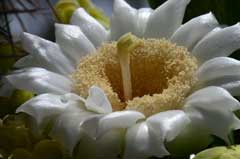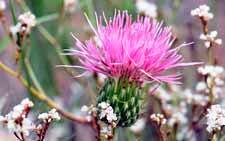Tidestromia lanuginosa, Woolly Tidestromia
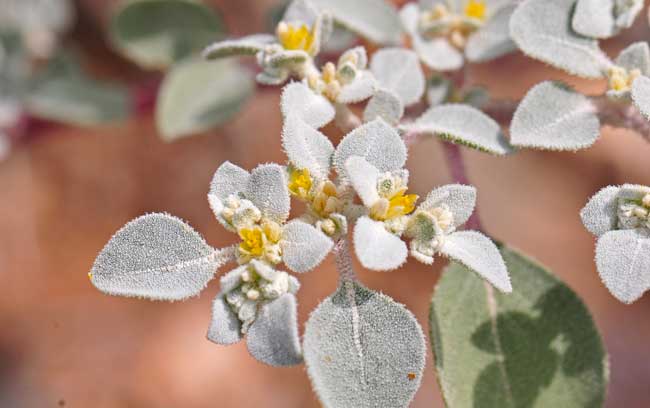
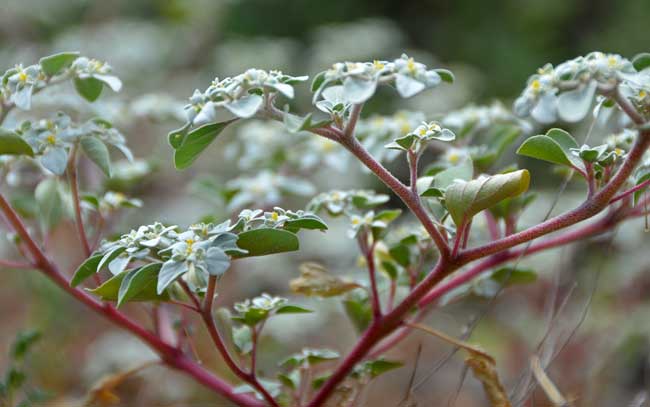
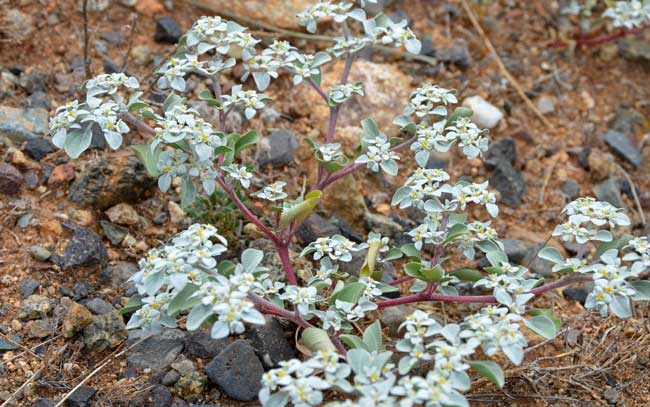
Scientific Name: Tidestromia lanuginosa
Common Name: Woolly Tidestromia
Also Called: Honeysweet, Honeymat, Wooly Tidestromia (Spanish: Hierba Lanuda, Hierba Ceniza, Espanta Vaqueras)
Family: Amaranthaceae, Pigweed Family
Synonyms: (Achyranthes lanuginosa, Cladothrix lanuginosa)
Status: Native
Duration: Annual
Size: Up to 2 feet or more.
Growth Form: Forb/herb, prostrate in low growing mats and or erect, branched, stems covered with dense white wool-like hairs (tricomes), stems low-growing or ascending.
Leaves: Green, gray-green or whitish-gray, opposite, somewhat fleshy, covered in soft short hairs (tomentose) or dense whitish wool (canescent) obovate, ovate or lanceolate.
Flower Color: Yellow, yellowish-green, very small flowers, flower petals absent, sepals (perianth) in clusters of 1 to 3, seeds are brown or brownish-red.
Flowering Season: June to October, blooms earlier and later in Texas.
Elevation: Below 5,500 feet.
Habitat Preferences: Sandy open soils.
Recorded Range: In the United States Woolly Tidestromia is found in all of the southwestern states and in; OK, KS, LA, MO, SD, IL and PA. It also is native to northern and central Mexico.
North America & US County Distribution Map for Tidestromia lanuginosa.
U.S. Weed Information: No data available.
Invasive/Noxious Weed Information: No data available.
Wetland Indicator: No data available.
Threatened/Endangered Information: No data available.
Comments: Woolly Tidestromia is a interesting looking, very distinctive low growing plant whose leaves are covered in soft dense whitish matted hairs. It is wide-spread and common in sandy soils below 5,500 feet in elevation.
You may note in some of the photos above, Tidestromia lanuginosa has reddish-purple stems which are due to the presence of betalain pigments. This, according to personal communication with Bryan Hanson, Professor of Chemistry & Biochemistry (emeritus) at DePauw University, betalain pigments are not uncommon in the Caryophyllales which include Amaranthaceae.
